Preparing for Surgery
Doctors will give their patients specific instructions regarding what to do before surgery. In general, patients should not eat or drink anything (except essential medications) anytime after midnight the night before surgery. Patients should tell their doctor if they begin to feel sick before surgery.
Depending on the reconstructive plan, some patients might need to get an impression made of their palate to assist in creating a prosthesis. This form of restoration involves the creation of an artificial palate similar to a bite plate. In addition to closing the defect in the palate, it also supplies teeth to the missing segment. If this is the case, patients will be referred to a prosthodontist prior to surgery.
What to Expect from this Procedure
On the day of surgery, the patient will likely need to arrive at the hospital a few hours before the scheduled operation. During this time, nurses will check the patient in and anesthesiologists will ensure the safety for general anesthesia. The surgeon will also come see the patient to review the plan and answer any last minute questions.
For all of these cases, the patient will be put completely to sleep with general anesthesia. Patients may or may not require a tracheotomy and/or feeding tube to aid breathing and eating, depending on the extent of the maxillectomy and reconstruction.
Types of Maxillectomies
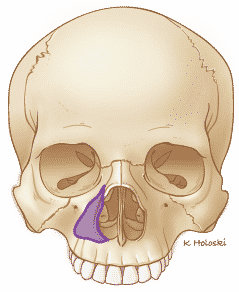
Medial Maxillectomy
In a medial maxillectomy, the part of the maxilla next to the nose (highlighted in purple) is removed, but the eye and the hard palate are preserved. A medial maxillectomy can be performed as an open procedure (through an incision next to the side wall of the nose on the face) or, in some cases, endoscopically (through the nostril using an endoscope and endoscopic instruments). An endoscopic medial maxillectomy may sometimes be called a “modified” medial maxillectomy when the surgeon makes small variations in the amount of tissue removed. In general, a major reconstruction will not be needed following this surgery.
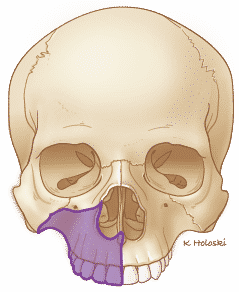
Infrastructure Maxillectomy
In an Infrastructure Maxillectomy, a surgeon will remove the hard palate and lower part of the maxilla (highlighted in purple), along with some of the teeth, but the orbital floor will be kept intact. Restoration of function following this type of surgery will require either a prosthetic obturator, a local flap, or sometimes a free flap.
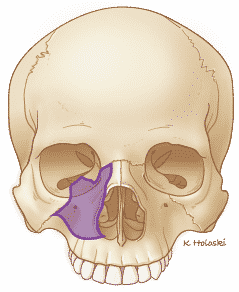
Suprastructure Maxillectomy
In a Suprastructure Maxillectomy, a surgeon will remove the orbital floor and the upper part of the maxilla (highlighted in purple), but the hard palate will be kept intact. The orbit may or may not be removed. This type of surgery will require reconstruction to create a new orbital floor so that the eye does not sink down into the cheek.
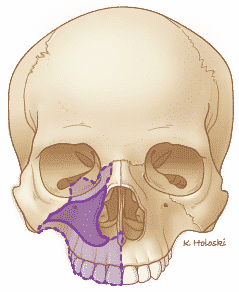
Subtotal Maxillectomy
A Subtotal Maxillectomy involves some variation of the above procedures, in which a portion, but not all of the maxilla is removed. The associated procedures and required reconstruction will depend on the size and location of the tumor and the extent of the resection.
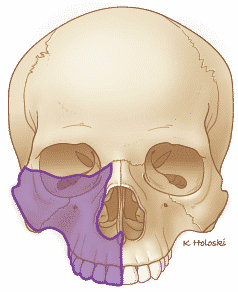
Total Maxillectomy
In a Total Maxillectomy, the hard palate, orbital floor, and the entire maxilla on one side of the face (highlighted in purple) are removed. Sometimes the orbit will also need to be removed depending on the extent of tumor invasion. When the orbit is removed during this surgery it is termed total maxillectomy with orbital exenteration. This type of surgery will require major restoration, likely including a free flap or a prosthetic obturator.
Some of these surgeries may require additional procedures, such as an orbital exenteration, neck dissection, tracheotomy, or feeding tube placement. Another possible associated procedure is a dacryocystorhinostomy, which helps the tear ducts empty into the nose. As part of this procedure, tubes will be placed into the tear ducts in the inner corner of the eye and will extend into the nose. Most often, these tubes are temporary and can be removed in the doctor’s office after a few weeks.
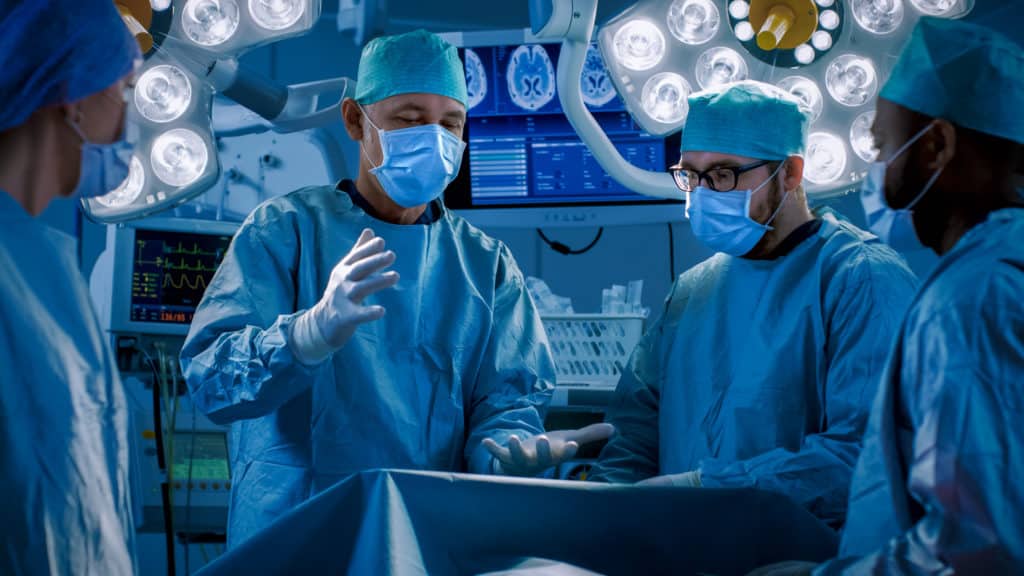
Reconstruction
The reconstruction following a Maxillectomy will depend on the type and extent of the resection. Some of the options for reconstruction include a skin graft, local flap, free flap, or a prosthetic obturator. In general, reconstruction involves permanent closure of the opening between the mouth, sinus, and nasal cavities above. There are numerous options on how best to do that using a variety of techniques. In technical terms, a prosthetic restoration is not an actual reconstruction of the defect, as there remains an opening in the palate that is only closed with the prosthetic obturator.
Recovery & Aftercare
When the patient first wakes up after surgery, they might have a tracheotomy tube or a feeding tube, and will likely have some drains in their neck to help remove any accumulated fluid and prevent infection. The patient will be given pain medications to alleviate any pain. The recovery process may also involve physical therapy or speech and swallowing therapy after surgery.
Hospital Stay
The recovery course following a maxillectomy will depend on the extent of the surgery and reconstruction. With some surgeries, the patient will be able to go home after a few hours of observation in the recovery room (endoscopic medial maxillectomy). However, most maxillectomy procedures will require a longer stay in the hospital, likely for 1-2 days. If a major reconstruction is performed, the patient may need to stay in the hospital for 5-7 days or sometimes longer depending on the patient’s previous treatments and comorbidities.
Hospital Discharge
Once the doctors determine that a patient no longer needs to be kept in the hospital, they will be ready for discharge. The discharge planning process begins well before the patient is actually ready to leave the hospital. The discharge planning team, which includes doctors, social workers, nurses, and physical therapists, along with the patient’s family, will determine the best place for the patient to go once they are ready to leave the hospital.
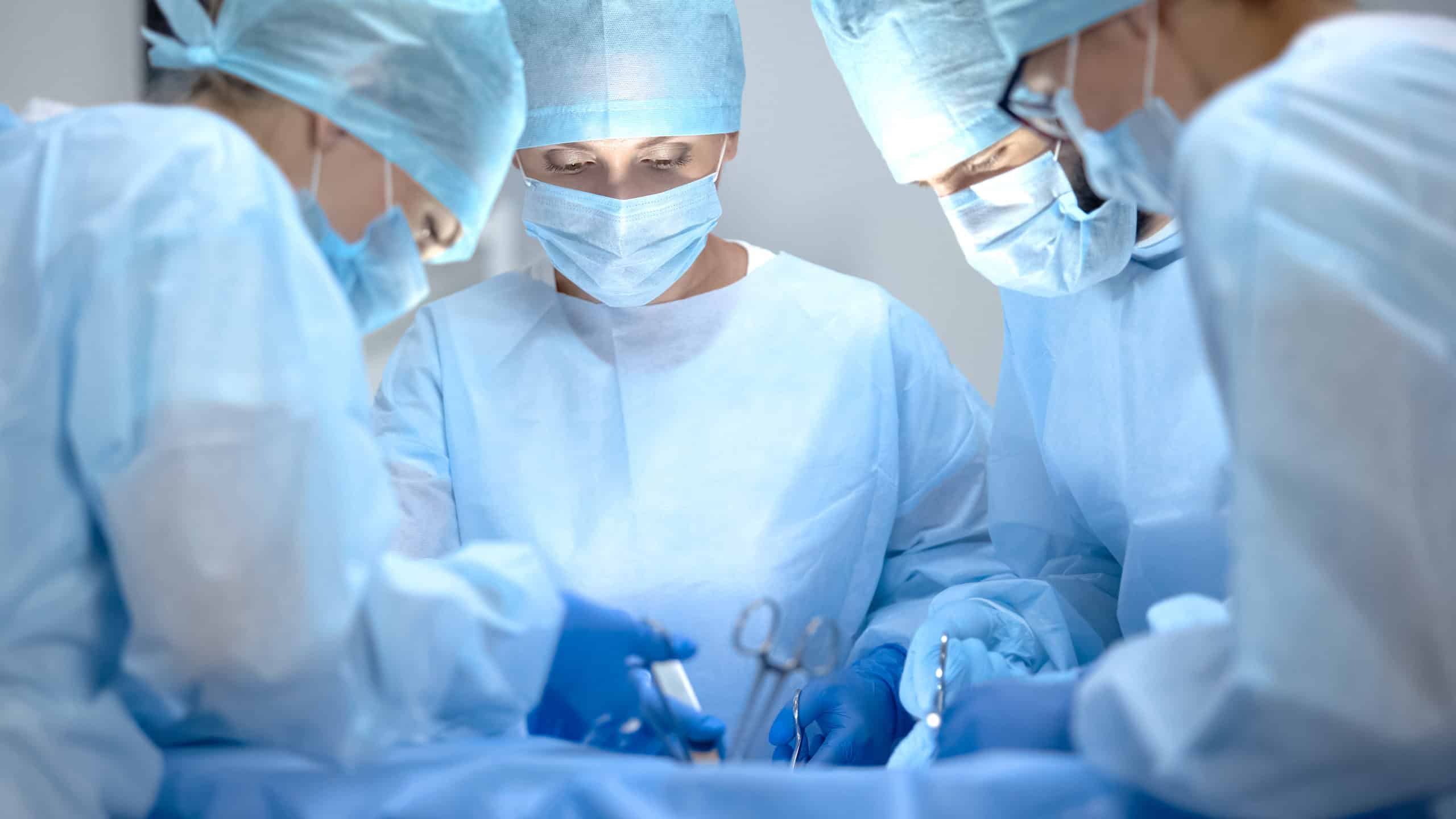
Download This Section
Feel free to download and print this page.
It’s free for personal use and to share with others you think might benefit from the information provided.
Risks of a Maxillectomy
As with any procedure, there are certain risks associated with undergoing a maxillectomy. These include:
- Bleeding (including Hematoma)
Some mild bleeding from the mouth or nose can be expected for the first couple of days after surgery. However, if there is severe bleeding after the procedure, the surgeon might need to quickly take the patient back to the operating room to stop the bleeding. - Infection
With any surgical procedure, there is always a risk of an infection. Infections can usually be treated with antibiotics, or by draining the infection. - Enophthalmos and Hypoglobus
These are terms for functional deformities in which the eye sinks back and down into the cheek. Proper reconstruction of the orbital floor should help prevent this from happening. - Cheek Numbness
The nerve that provides sensation to the cheek travels through the maxilla bone and exits just under the orbit. This nerve may need to be sacrificed as part of the maxillectomy, which would result in numbness and tingling in this part of the face. - Chronic Tearing (Epiphora)
This is caused by a blockage of the nasolacrimal duct, which empties tears from the inner corner of the eye into just inside the nose. Chronic tearing can be prevented with a dacryocystorhinostomy, along with nasolacrimal tubes, as discussed above. - Blood Clots
Patients who undergo major surgeries, especially patients who have cancer, are at an increased risk of developing blood clots in their legs (deep venous thrombosis or DVT). Sometimes these blood clots can travel through the veins and into the lungs, causing a pulmonary embolism (PE). If such a problem occurs, patients will likely require anticoagulation (blood-thinning) medication to prevent more clots from forming and ending up in their lungs. - Persistent Tumor
After the cancer is removed, the maxillary bone (and associated tissue) will be analyzed by a pathologist. It takes around one week to completely analyze the tissue. If there is evidence of remaining cancer on the margins (edges) of the bone resection, the doctor might recommend bringing the patient back for an additional surgical procedure to obtain clear margins and remove any remaining cancer.

Top Questions for Your Doctor
Access our list of the most important questions to ask your physician at your next appointment.











